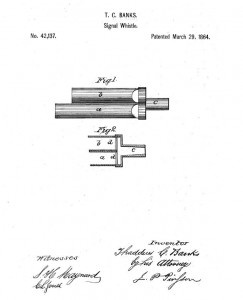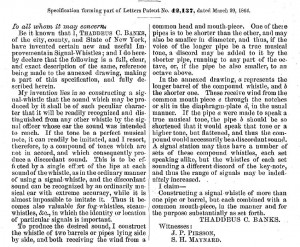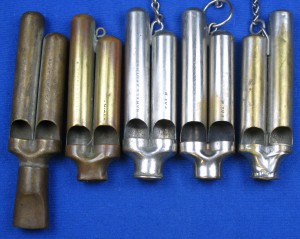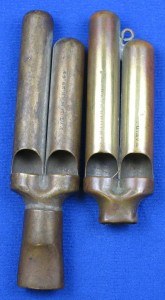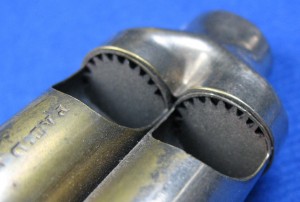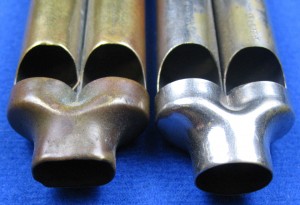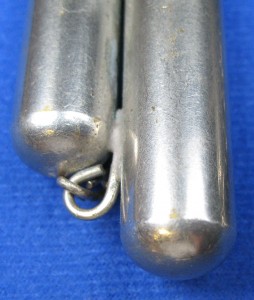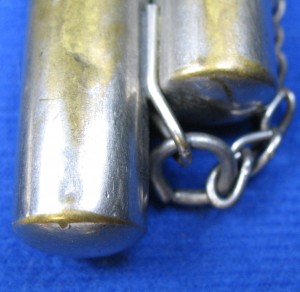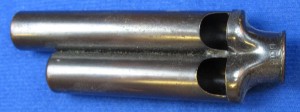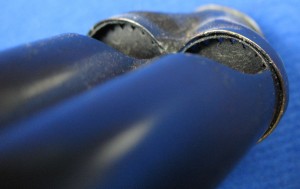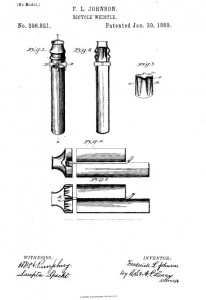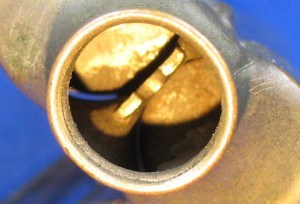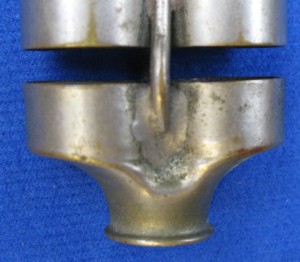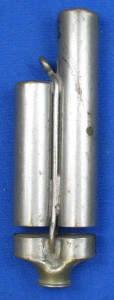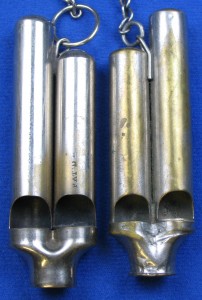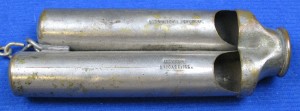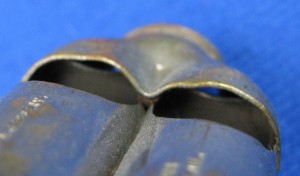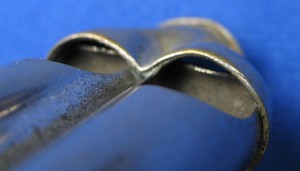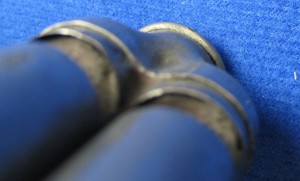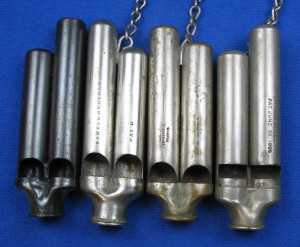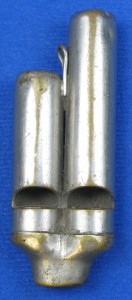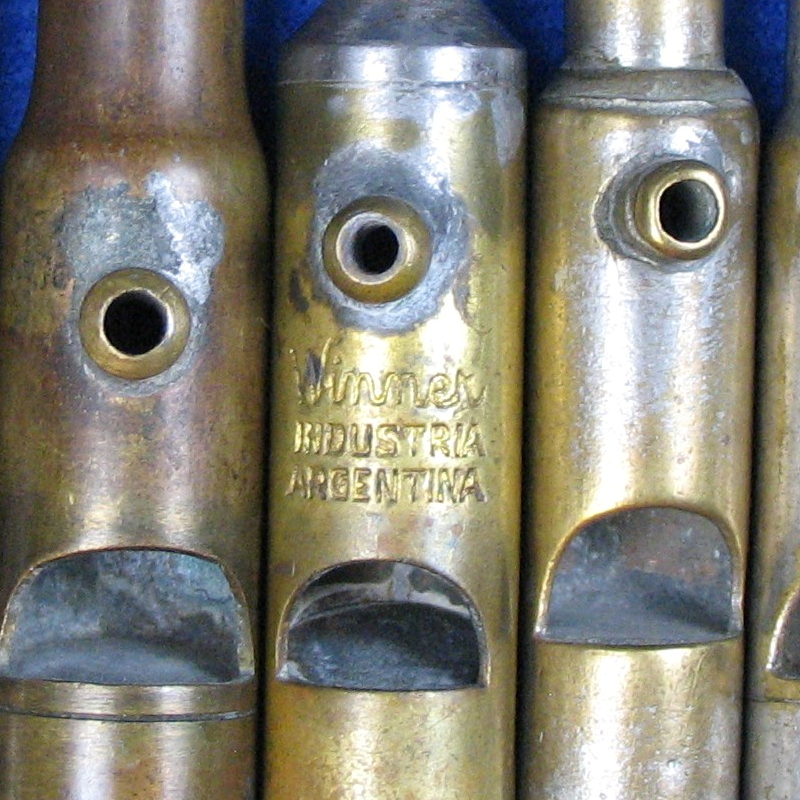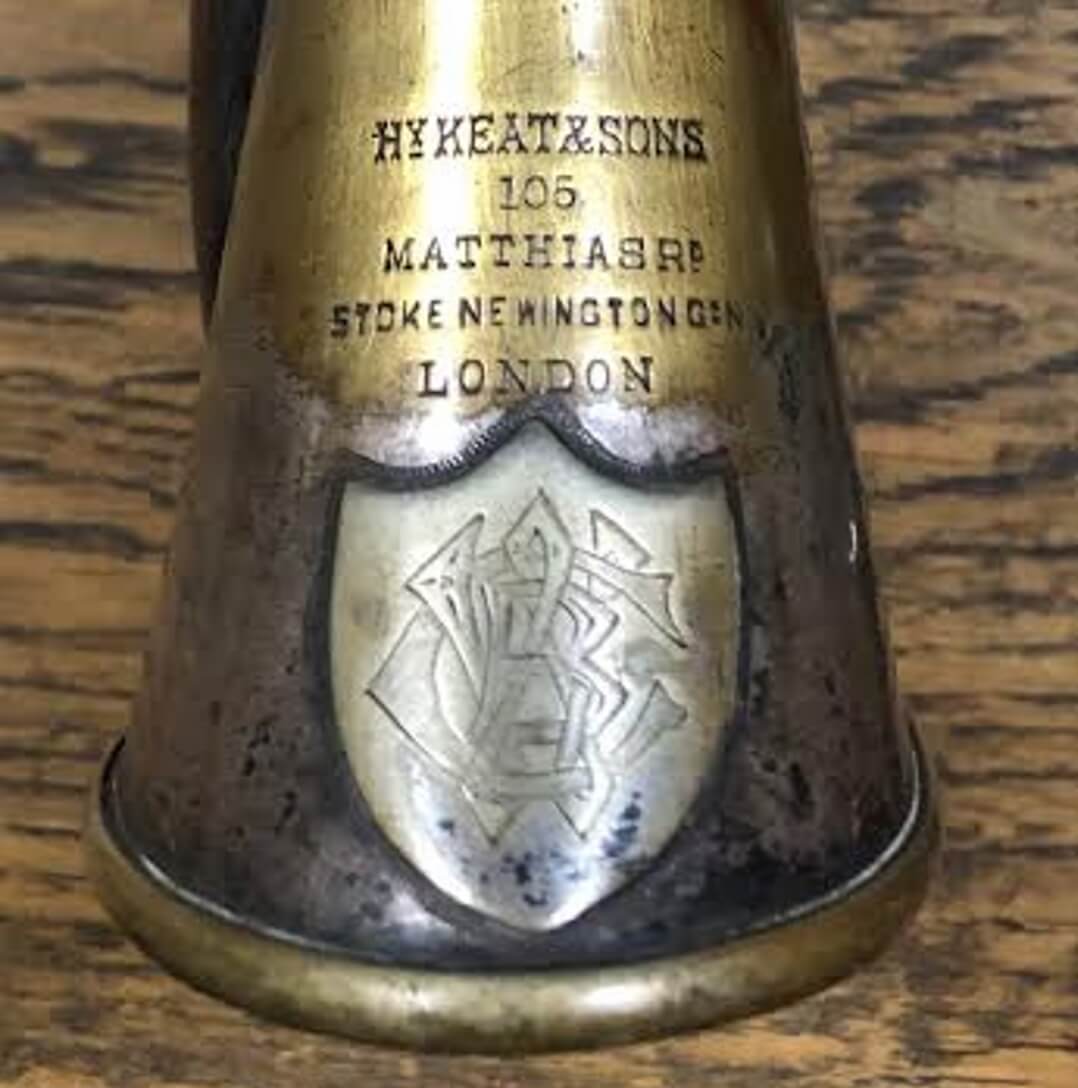Spotlight > Whistle Categories > Multi-Chamber > 48
AT first we naively thought to do a SPOTLIGHT on thin walled multi-tube whistles all at once.
However, when researching for the last year, it became obvious that the category needed to be split up. More than that, it took a lot more cash flow to track them down and present them than we were prepared for. So there will be some references to whistles not in the reference collection itself, including other sites, books, catalogs and collections.
Yes, the most significant thing to come out is that just within the duplexes it is quite a large study in its own right. These whistles date back to mid 1800s and march through a multiplicity of models, manufacturers and uses.
It was also found that one manufacturer turned out to be a dominant force in this series that was unexpected.
What has held us back ?? The variety within this arena and amount of manufacturers that came to light made it difficult to form categories. This venture may take some corrections as more comes to light. Indeed some corrections are already necessary.
So let’s begin with the earliest known information. We travel back to March 29 1864. Why there ?? Because that is the earliest patent date for a duplex whistle in the USA by Thaddeus Banks and his brother Samuel Banks, pictured as follows:
The text itself says he was striving for dissonance with the two tubes of different lengths. We will go on to see:
- Lengths
- Mouthpieces
- Windows
- Diaphragms
All these we hope to use to differentiate manufacturers and to help in dating them to some extent. Dating will be more dependent on the stamps in the USA. The earliest whistle is to the 1864 patent. It has the notches or slits as mentioned in paragraph four. This turns out helpful as an identifying design of Banks and Brother in duplex thin walls. It does not appear to be an identifying mark of Overman as speculated by some, however an open mind must be kept. On the other hand it has been used throughout Banks production and on into B&R production. At this point Overman did not use it with their name on it. Nor did any other maker.
Usually a simpler mouthpiece is seen, but pictured is a remarkable extended mouthpiece that was found and used here, side by side with the next in progression ( by Banks also ). First a group series picture…
Both come with their characteristic ‘comb’ teeth in the diaphragm as follows…
This diaphragm is the Banks theme and until about 1910 is a distinguishing mark for them. So we see a series of adjustments in the mouth pieces from flat to round with sharp edges to rolled mouth pieces.
The windows stayed the same for 35 years, as did the lengths and ends. One may note the ends are fully rounded — another identifying mark for Banks and Brother. Now compare to a later end finish that is squared.
As you can see just tracking Banks and Brother is a challenge as they made whistles for decades.
The time would come to hand off the baton and B&R came on the scene circa 1910. They utilized the combed teeth diaphragm in their production ( could the name B&R come from Banks and ?? ) – no history has yet come to light. Banks was out of New York, whereas there is some evidence of B&R is associated with Waterbury, Connecticut )
B&R ceased making whistles by WW11 and the comb teeth design dies with them. All other manufacturers used plain openings or utilized a ‘pip’ in the center of the window. There is a triplex whistle with ‘offset’ chambers along with different length chambers that utilizes the comb teeth design also. However it has not been proven who made this, Banks and Brother, B&R or ?? There has not been found one with an identifying stamp on it, nor a catalog picturing it. However, it is a very distinct design for a triplex.
Now let’s digress for a moment to another patent design. F.L. Johnson also patented a duplex thin wall. It was unique in a couple ways from Banks design. This is 25 years after the Banks patent.
Striking how the mouthpiece floats from the body, held on just by the middle wires. Squared off ends, and an entirely different way of approaching the diaphragm design is viewed. Since the windows are entire, the air can go in any direction. In this whistle the air goes out the center by the mid wire.
Peculiarly the patent date is for 1887, some have been seen for 1885. Perhaps the stamps were misapplied.
In the case of Johnson and the next two, Overman and then Gormally and Jeffery ( contemporaries ) all three were aimed at the cycling market and had the capacity to manufacture their whistles. All three had different characteristics. The Overman whistle utilized square windows. The G & J used typical half round.
Interspersed in here is what appears to be a transition whistle between Banks and B&R as follows:
What are seen is square ends and two sizes of windows with no stamp. The teeth are combed though. It appears to be an early B&R.
Now let’s glance at Gormally and Jeffery:
Classic duplex again, — the two tubes slightly shorter and closer in length . Note the diaphragms now.
Yes, rather than combed the G&Js are flattened at the window opening, but with no ‘pip’.
They are also folded up.
Overman are rounded diaphragms, not flattened at all and with no combed teeth.
The windows are square and the inside of the diaphragms are extended towards the mouthpiece.
As you can see, there is quite a bit of tracking to do in this category of duplex whistles that lasted for decades, perhaps a hundred years or more. In reality a very long lasting whistle design. Used for railway, steamboat, cycling, sports…
To find them without dents is a challenge, besides no rust or excessive corrosion. There are variations to the mouthpieces, lengths, windows, diaphragms, chains and hooks, even where or if there was a hook for the chain. Many of these types of thin wall duplex whistles have their own theme chains too. Although in different gauges and sizes in lengths, typically they have the following type links:
Isn’t that interesting ?? Why would they all use a theme chain ?? The button hooks varied immensely in design and are fun to watch for in themselves.
In closing, here’s a picture of the four major players turn of the century B&R, Banks and Brother, Gormally and Jeffery and Overman Wheel Co.
Dominant names in thin wall duplexes over their entire history are:
Banks and Brother
Gormally and Jefferiy’s
F.L. Johnson
Overman Wheel Co.
B&R
Hudson mdl 145 ( 1935 catalog )
Romo
Perko
Tapatco
??
A puzzling shorter example, not uncommon to collecting and identifying these…
As these come to light perhaps they can be added in. From 1930 on they become pretty generic and they default to that ‘pip’ in the diaphragm ).
.
TWG
Posted September 21, 2015
